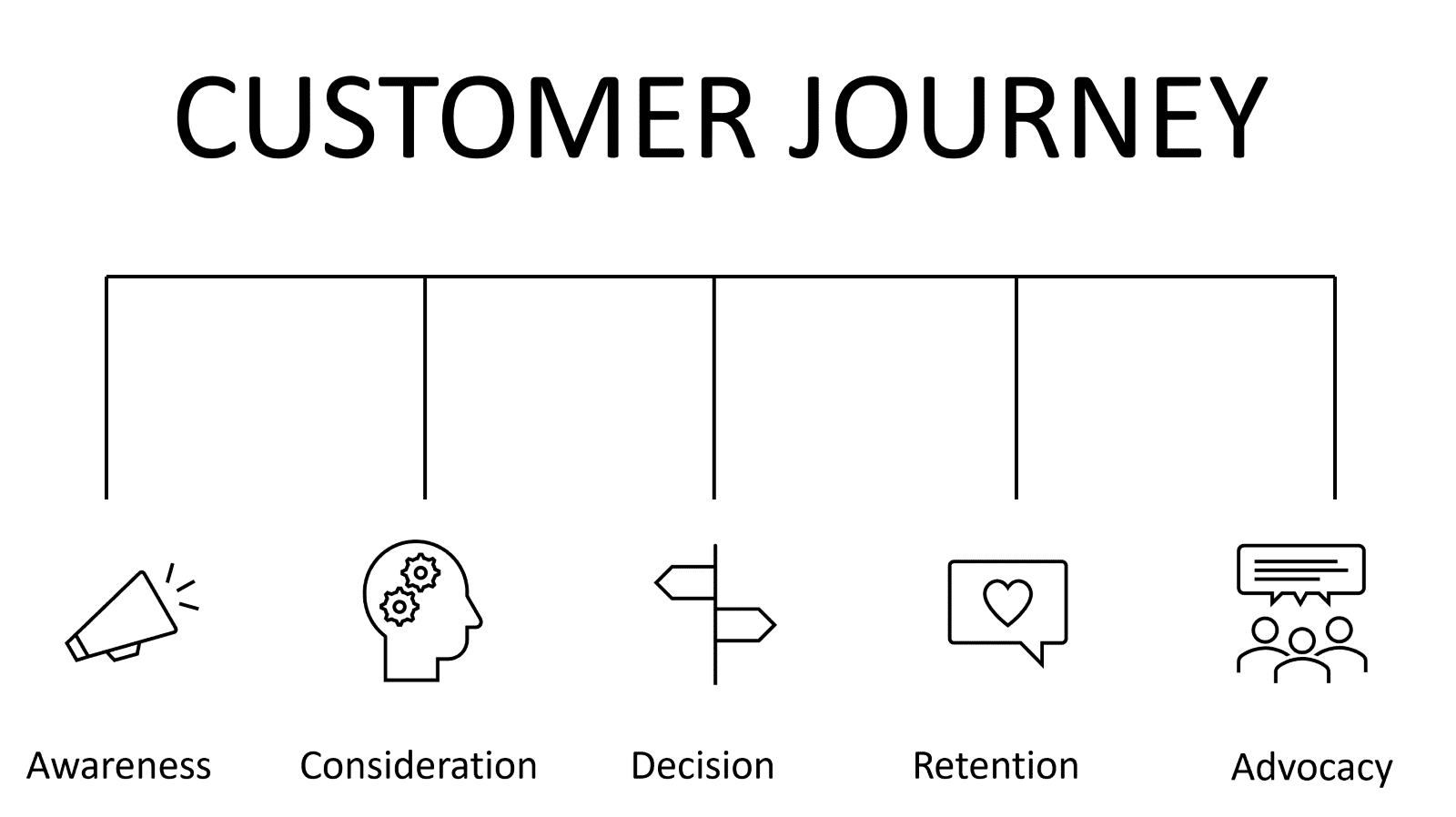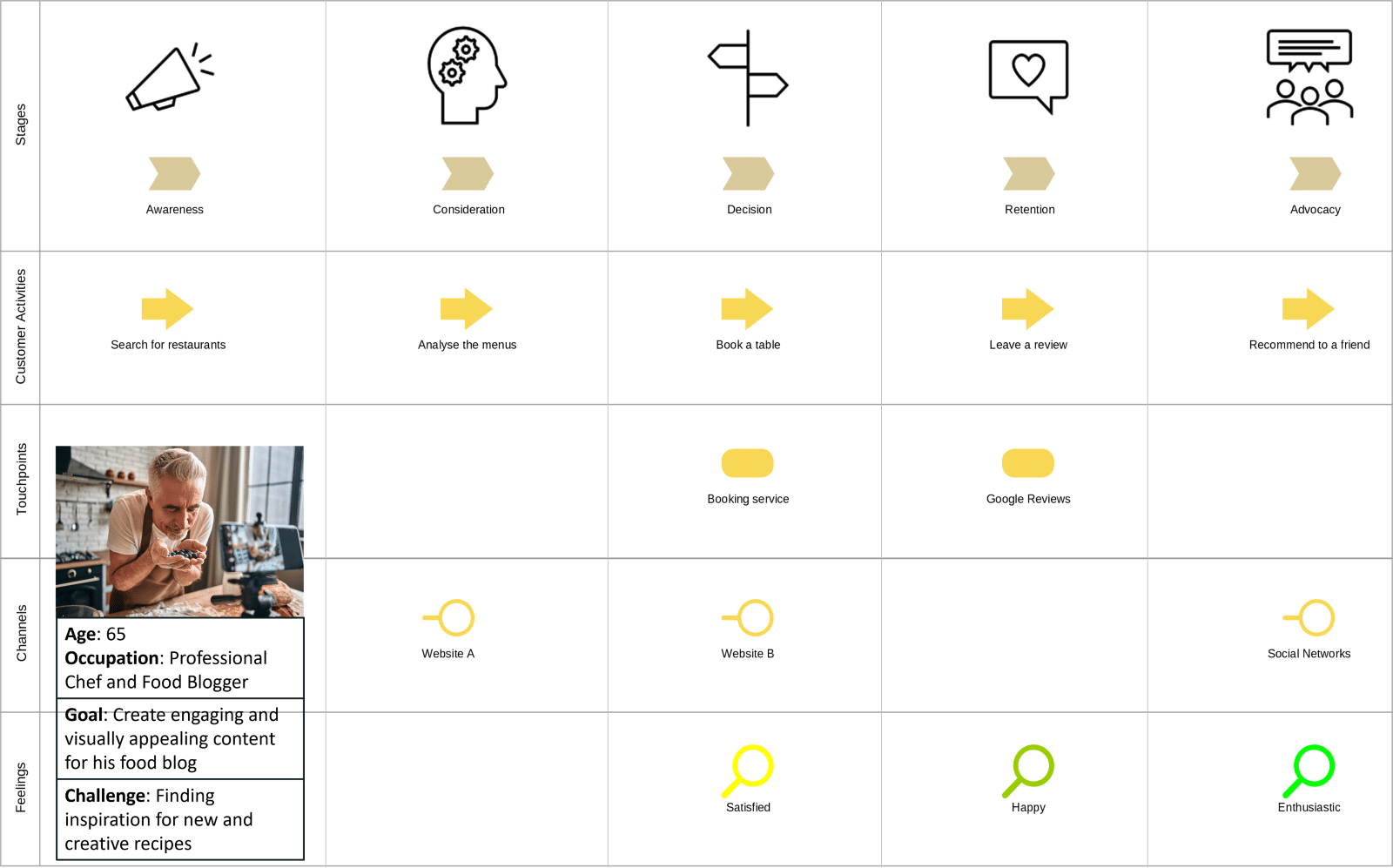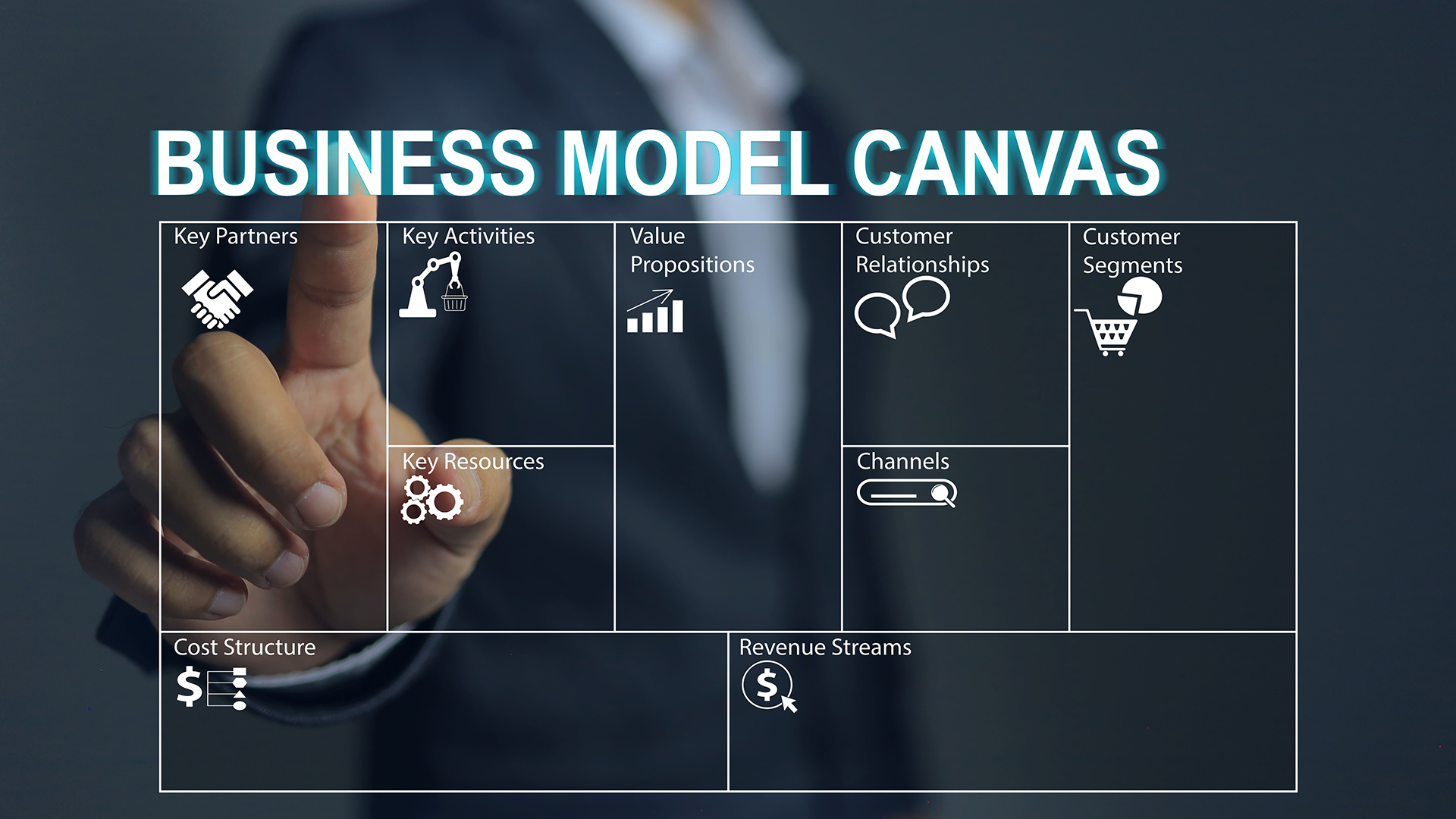Introduction
In today’s fast-paced business world, companies are working hard to keep up with changes and meet the needs of their customers. While that’s a good plan with many benefits, there’s something important we often overlook. When we think about customers, we usually focus on when they purchase and forget what happens before and after that.
This blog delves into the overlooked aspects. We’re not just talking about buying; we’re looking at the entire customer journey, exploring why this matters for organizations. Join us as we unravel the secrets to creating exceptional customer experiences. Discover the importance of using a map, known as customer journey mapping, guiding the way to customer satisfaction and business success.
What is a Customer Journey?
Embarking on a journey as a customer in today’s dynamic business landscape involves a series of interconnected experiences that shape our interactions with products, services, and brands. From the initial discovery to the post-purchase engagement, every touchpoint plays a crucial role in defining our overall experience. A customer journey, in essence, is the end-to-end exploration of these interactions, providing a comprehensive view of our experience from awareness to engagement.

What are the stages of a Customer Journey?
As mentioned, a customer journey involves a series of events. Each of them can be assigned to a specific stage. When we talk about a Customer Journey, we usually imply five of them.

Customer Journey stages
1. Awareness
This stage involves recognizing the need for a product or service and seeking a solution that fits the need.
2. Consideration
At this point, multiple options come into play, initiating an evaluation phase. Customers consider various choices, weighing the pros and cons. This eventually leads to…
3. Purchase
Once the customer has evaluated each option and made the decision, they proceed to the purchase process.
4. Retention
While you might assume the journey concludes after the purchase, it doesn’t. This stage is crucial because it’s when customers assess their satisfaction with the purchase, deciding whether they’ll make another buy.
5. Advocacy
The journey doesn’t stop at retention, either. Satisfied customers often recommend the experience to others. Conversely, if dissatisfied, they might discourage others from “making the same mistake.”
Why engage in Customer Journey Mapping?
A Customer Journey Map is a visual representation that outlines the complete experience a customer has with a brand, product, or service. It illustrates each stage of the customer journey, from initial awareness through the various touchpoints, interactions, and potential challenges. By mapping out this process, businesses gain valuable insights into customer perspectives and behaviors, enabling them to enhance and optimize the overall customer experience.
Customer Journey Mapping adds significant value to customer journey tracking for several reasons. Firstly, it provides a holistic and easily digestible overview of the customer experience, allowing stakeholders to grasp the journey’s complexity. Additionally, visual representations highlight touchpoints, emotions, and potential pain points, fostering a deeper understanding of customer interactions.
Moreover, visualizations facilitate communication and collaboration within a team, aligning everyone on the customer-centric approach. It helps identify gaps, areas for improvement, and opportunities for innovation. Overall, visual representation enhances clarity, fosters empathy, and serves as a practical tool for businesses aiming to enhance customer satisfaction and loyalty.
Example of a Customer Journey Map
Let’s give this theory a little context. Imagine it’s your birthday, and you want to take your friends and family somewhere nice for dinner.
Where would your journey begin? You would probably go online and start looking for some options, and Google would provide various results. This is the awareness stage. Since Google offered so many results and this is a special occasion, you conduct a thorough analysis of each restaurant in order to find one that fits everyone’s needs. This is where the consideration stage begins. Once you have reviewed each restaurant, read their menu, seen the pictures, etc. you make your decision and book a table at a specific restaurant. Obviously, this is where the decision stage starts and ends. After the dinner, you would probably discuss the restaurant and the entire experience with your friends and family. You would talk about what you liked and didn’t and subconsciously decide if you would ever return to this restaurant. This is where the retention stage kicks in. If you were satisfied with your choice and happy after the dinner, you are most likely going to come back to the restaurant with some other friends/colleagues, or if you post pictures from this restaurant, you will engage in the advocacy stage.
From the initial discovery phase to the post-dining experience, each stage plays a crucial role in orchestrating the seamless progression of the dining process at the restaurant. The significance lies in understanding and optimizing each touchpoint to ensure a seamless and satisfying journey, highlighting the complexities inherent in even a single dinner experience.
Tipp: Check out another great case study showcasing the role of EA in customer experiences.
The importance of Customer Journey Mapping
The customer journey, illustrated through above-mentioned stages, serves as a vital framework for businesses and organizations seeking to enhance customer satisfaction and loyalty. Let’s delve into the specifics at each stage:
Awareness:
- Importance: This stage marks the initiation of a customer journey, where potential customers become aware of your offerings.
- Utilization: Organizations can leverage targeted marketing and online presence to capture the attention of potential customers, creating a positive impression.
Consideration:
- Importance: In this stage, customers are carefully looking at their choices, and it’s a crucial time to guide their decisions.
- Utilization: Organizations can provide detailed information, showcase unique selling points and offer incentives to stand out among competitors, directing customers towards a positive perception.
Decision:
- Importance: The decision stage is the culmination of the customer’s evaluation, where they commit to a product or service.
- Utilization: Streamlining the decision-making process with transparent information. Easy booking and personalized offerings can positively impact customer choice.
Retention:
- Importance: Retaining existing customers is more cost-effective than acquiring new ones, making this stage crucial for long-term success.
- Utilization: Organizations can focus on delivering exceptional experiences, personalized interactions and loyalty programs to encourage repeat business and positive word-of mouth.
Advocacy:
- Importance: Satisfied customers become brand advocates, driving organic growth through recommendations and positive reviews.
- Utilization: Encouraging and rewarding customer advocacy, such as sharing experiences on social media, can amplify brand visibility and attract new customers.
Benefits of Modelling a Customer Journey Map with ArchiMate
For Enterprise Architects, understanding the customer journey is crucial, as it enables them to align technology solutions with the specific needs and experiences of end-users. By mapping out the customer journey, Enterprise Architects gain valuable insights into the touchpoints and interactions users have with the organization’s systems and technologies. This knowledge allows architects to design and implement solutions that enhance the overall user experience, addressing pain points and optimizing processes. Take a look at the table below for more context and see what a Customer Journey looks like when mapped with Archimate using the EA tool ADOIT.
| CUSTOMER JOURNEY | EXAMPLE | ARCHIMATE |
|---|---|---|
| Persona | Birthday person | Business Role |
| Customer Activity | Analyse the menus, Book a table, etc. | Business Process (Specialisation: Customer Task) |
| Touchpoint | Booking service | Business Service |
| Channel | Website A | Business Interface |
| Feeling | Happy | Assessment |
ArchiMate Artifacts in Customer Journey Mapping
Example of a Customer Journey Map in the EA tool ADOIT
Summary
In summary, a customer journey is a comprehensive depiction of a customer’s engagements with a brand or business, spanning multiple touchpoints from initial awareness to post-purchase activities. It encompasses the entire experience, encompassing research, decision-making, and ongoing engagement.
Fully understanding and optimizing each touchpoint in the customer journey is crucial. This enables organizations to tailor strategies, meeting customer expectations at every stage for a seamless and satisfying journey. The result is enhanced customer loyalty, positive brand perception, and sustained business success. Meticulous attention to each stage, even in a single dining experience, underscores the importance of ensuring a harmonious and delightful customer journey.






